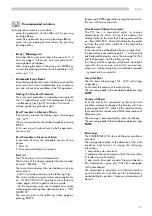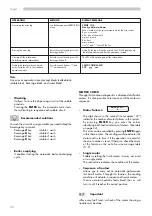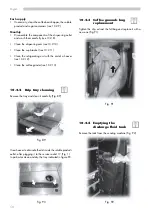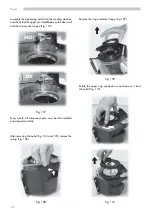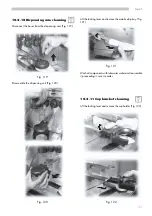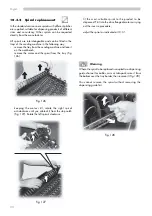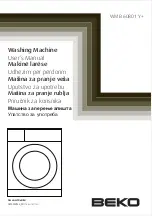
45
English
Recommended solutions
In maintenance mode it is possible to:
-
move the gearmotor of the coffee unit by pressing
beverage
A
key;
-
move the cup bracket by pressing beverage
B
key;
-
move the cup loading central column by pressing
beverage
C
key.
-
Error / Message nn
Describes the current error (check the cause at 11.2
Error messages). If there are no errors present, this
message does not appear.
After verifying the cause of the error, press ENTER key
to reset the vending machine (for the complete list of
errors see 11.1).
-
Automatic Error Reset
Simplified mode (for technical unskilled personnel) for
error reset that, when implemented, tries to remove
any non-critical error condition in the VM operation.
Starting the Error Reset Procedure
The error-reset procedure is started by pressing both
the “1 Programming” and “ 2 Maintenance” buttons
simultaneously (see Fig.60) for at least 5 seconds.
A beep signals the procedure start.
Reset Procedure in Absence of Errors
If no failure is present, the display shows the message
“Ok - 0/0”.
The user can go back to the standard mode by pressing
ENTER.
In this way, a quick system check-up by the operator is
also assured.
Reset Procedure in Presence of Errors
In presence of errors the procedure consists of two
phases:
1. Error list;
2. Error removal (attempt to remove).
Error List
The VM displays a list of detected errors.
The first line of the display indicates the total number
of errors “ ERRORS XX ”.
The second one displays their descriptions on one or
more screens.
- Such list is made according to the following rules:
The errors relating to spiral motors are grouped, for
ex.: “M 22 23 33 42 43” (possibly on more than one
screen page) with no regard to the error code.
- All the remaining errors are displayed on a single
screen page containing their descriptions for ex.: “NO
WATER 01”.
The user can pass to the following screen page by
pressing ENTER.
By pressing ENTER again after viewing the last screen,
the user will remove the errors.
Error Removal (Attempt to remove)
The VM tries, in sequential order, to remove
automatically the errors. During these attempts the
display indicates the error that is being removed (for
ex. “Reset M24-E51”; where M24 identifies the motor
to which the error refers while E51 is the code of the
detected error).
In the second line of the display there is a “status bar”:
the bar elements are made by points “.”. At the end of
each attempt the display shows the message Ok/Fail
and then proceeds with the following step.
If, at the end of the sequence, all the errors have been
removed, the reset was successfully carried out;
otherwise - if one or more errors could not be removed
- it proved to be unsuccessful.
Successful Reset
The VM shows the message “ Ok - N/N” with a long
single beep.
N indicates the number of removed errors.
The user can go back to the standard mode by pressing
ENTER
.
Unsuccessful Reset
If, at the end of this procedure, at least one error
condition remains unchanged, the display will show
the message “Fail X/N” where X is the number of errors
that could not be removed and N the total number of
detected errors.
The message is accompanied by some short beeps.
The user can go back to the standard mode by pressing
ENTER
.
-
Error Log
The COMBISNACK VM stores all the error conditions
occurred.
The storage takes place at the detection of the error
condition and consists in storing the following
information:
1. code of the error occurred
2. number of the spiral motor to which the error refers
(if it refers to a spiral motor)
3. day, month, hour and minute of the error detection
(this information is given only if the VM is equipped
with a timekeeper).
The information is included in a list that can contain
up to 50 elements, over that limit the information is
stored starting by position 1 (previous information will
be lost).
Содержание D.A. COMBISNACK
Страница 67: ...67 English...
Страница 68: ...Cod 0875 971 Ed 02 10 03...















